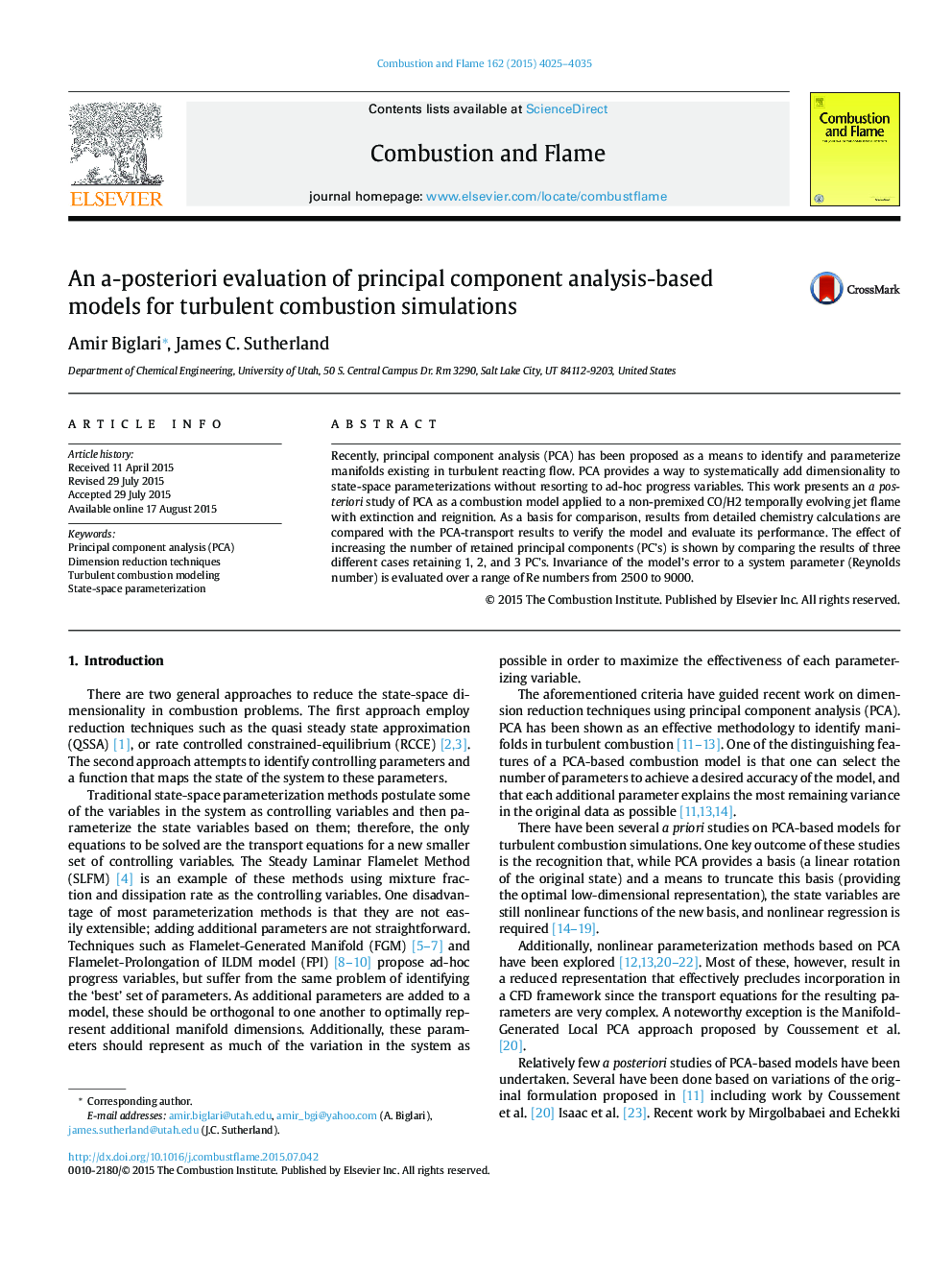| Article ID | Journal | Published Year | Pages | File Type |
|---|---|---|---|---|
| 10264792 | Combustion and Flame | 2015 | 11 Pages |
Abstract
Recently, principal component analysis (PCA) has been proposed as a means to identify and parameterize manifolds existing in turbulent reacting flow. PCA provides a way to systematically add dimensionality to state-space parameterizations without resorting to ad-hoc progress variables. This work presents an a posteriori study of PCA as a combustion model applied to a non-premixed CO/H2 temporally evolving jet flame with extinction and reignition. As a basis for comparison, results from detailed chemistry calculations are compared with the PCA-transport results to verify the model and evaluate its performance. The effect of increasing the number of retained principal components (PC's) is shown by comparing the results of three different cases retaining 1, 2, and 3 PC's. Invariance of the model's error to a system parameter (Reynolds number) is evaluated over a range of Re numbers from 2500 to 9000.
Related Topics
Physical Sciences and Engineering
Chemical Engineering
Chemical Engineering (General)
Authors
Amir Biglari, James C. Sutherland,
